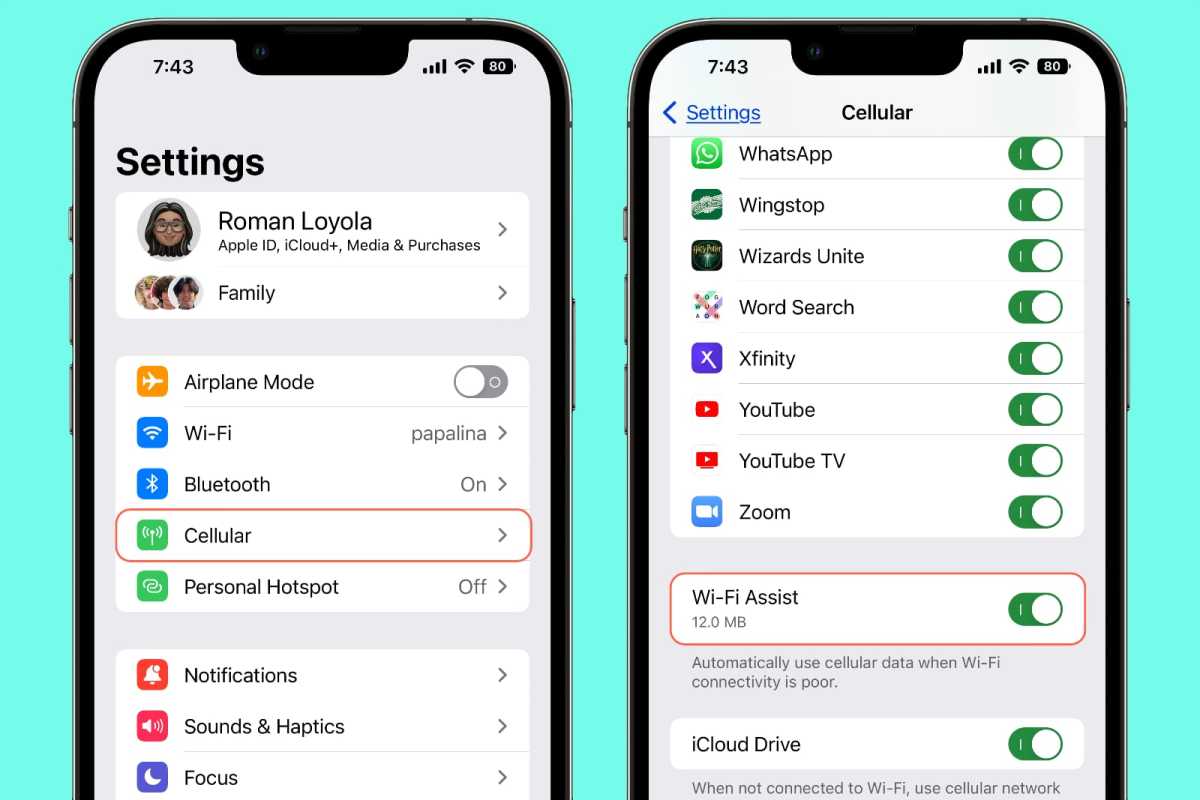The Wi-Fi Assist feature, added back in iOS 9 and available on iPhones and cellular iPads, supplements a low-quality Wi-Fi network, complements a Wi-Fi network that you have a weak connection, or covers interruptions when your broadband service goes down . But, readers want to know, will it increase your mobile bill?
A few years ago, the answer (at least for US residents): probably. In 2022, however, it is much less likely to be a problem.
First, Wi-Fi Assist only supplements the bandwidth usage on the device. If you’re using your iPhone or iPad as a Personal Hotspot, you’re already tapping the cellular network, depending on the limits and pricing set in your cellular plan.
Second, Apple does not support all apps and services with Wi-Fi Assist. The company notes that Wi-Fi Assist helps “with most apps like Safari, Apple Music, Mail, Maps, and more.” That’s a bit vague, but there’s no mention of video streaming, one of the heaviest bandwidth uses.
The setting for Wi-Fi Assist is at the bottom of the Mobile Settings page. You may have to scroll down a long way if you have a lot of apps on your phone.
Foundry
Third, a significant number of US cellular subscribers have “unlimited” bandwidth on their cellular plans. That’s “unlimited” in quotes, because mobile companies don’t cut or charge these flat-rate plans, but rather limit you to a low data rate (like 256Kbps or 3G speeds), or lower your priority among other users once you pass. a fixed amount. It is usually 5 GB to 50 GB per month per line. Other subscribers pay for fixed amounts of data, after which they are cut off or have to pay extra for more usage that month.
So you’ll probably only use more bandwidth if you regularly use a Wi-Fi network with poor performance, and you’ll only be affected if that usage pushes your monthly total over a threshold or limit.
You can check your current usage of Wi-Fi Assist, which is enabled by default, by going to Settings > mobile and swipe all the way down. My most recent usage was 916 KB – that’s just under one megabyte – while using almost 2 GB directly on my phone. Tap the switch to turn it off.
This Mac 911 article answers a question from Macworld reader Claire.
Ask Mac 911
We’ve put together a list of the most frequently asked questions, along with answers and links to columns: read our super frequently asked questions to see if your question is there. If not, we are always looking for new problems to solve! Email yours to mac911@macworld.com, including screenshots where appropriate and if you’d like to use your full name. Not every question is answered, we don’t answer email and we can’t provide direct advice to solve problems.

